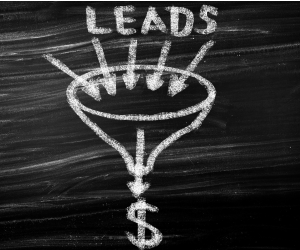Why You Need a Local Business Sales Funnel to Increase Your Revenue
As a business owner, you know that generating revenue is the key to success. Whether you’re a small business owner, consultant, or independent contractor, having a sales funnel can help you make more money and increase your sales. But what is a local business sales funnel, and why should you consider having one? We previously spoke about the power of sales funnels, but today we’re focused specifically on your local business’s sales funnel! Let’s break it down.
What is a Local Business Sales Funnel?
A local business sales funnel effectively turns potential local individuals and businesses into paying customers by guiding them through the sales process of buying from your company. It starts with lead generation, then moves on to nurturing those leads and eventually converting them into paying customers. It considers every step of the customer journey to optimize each step for maximum efficiency and effectiveness.
Why Your Small Business Needs One
An effective sales funnel will benefit your small business in many ways. A good sales funnel helps you better understand your target audience and their needs, build relationships with potential customers, and create content that resonates with them. It also allows you to track the progress of each potential customer throughout their journey, which makes it easier for you to make adjustments as needed. This helps to ensure that no leads fall through the cracks and are not converted into paying customers.

6 Tips On How To Make A Local Business Sales Funnel
1) Start With Lead Generation – The first step of any sales funnel should be lead generation. This means figuring out your target audience, writing effective messages that resonate with them, and creating content like blog posts, videos, or webinars to draw them to your website or landing page. So, for example, if you are a service-based business in Boston, it might make sense to specifically focus on Boston, Cambridge, or other local cities when you create content. We have a real estate client in Plymouth, Massachusetts, about 45 – 60 minutes from Boston. Although we were relatively close, we decided to zero in and focus on Plymouth County, his local community.
1) Email Marketing Software – Decide which lead generation software you’d like to use. I’m a big fan of Mailerlite since it is easy to use, has all the necessities needed to collect and manage leads, and can easily nurture them, which I’ll explore in the next step. You could also look for a CRM that has email marketing features.
2) Nurture Leads – Once you have generated leads, nurturing them to keep them interested in what you offer is important. This could involve sending out regular emails or newsletters with helpful content related to their needs and relevant to a specific product or service they may be interested in buying from your company. Whether you have a local business sales funnel or a general sales funnel, you need one that includes this nurturing stage to stay relevant to your audience. The real key here is to provide value. The more helpful you are to others, the more reliable and trustworthy you become, making it easier to establish a business relationship.
3) Offer Incentives – Offering incentives such as free shipping or product discounts can go a long way toward encouraging potential customers to convert into paying customers. It shows them you value their business and are willing to go the extra mile to get their attention and loyalty. Yes, you might lose out a little bit in the short term, but it usually works out well for you and your customers in the long term.
4) Focus On User Experience – User experience is essential in ensuring conversions from leads into paying customers for your small business; if users don’t find navigating through your website accessible and enjoyable, they won’t stick around long enough to convert! Ensure everything from navigation menus to product descriptions is easy-to-understand so that users don’t get confused or frustrated while using your site.
5) Track and Analyze Progress – Tracking each step within the funnel helps you identify where improvements can be made. This allows you to optimize different steps within the process so that more leads are converted into paying customers over time! Analyzing data such as how many people viewed a particular page on your website or clicked on a link within an email can give valuable insight into what works well when converting leads into paying customers! Google Analytics, Mailerlite, and other tools can help give us this insight. This is one of those essential but often overlooked stages of building a thriving local business sales funnel since it ultimately shows us what is and isn’t working.
6) Test and Tweak – Don’t be afraid of testing different elements within the process; perhaps try changing the messaging slightly based on customer feedback or leads to resonate more effectively with potential buyers! Keep tweaking until something clicks – there’s no one-size-fits-all approach to optimizing your local business sales funnel!

Increase Sales Today!
Implementing an excellent local business sales funnel for your product or services helps bring in more money. It gives you valuable information about reaching potential buyers by understanding how they act at different stages of their journey to becoming loyal customers. Utilizing these six tips, tracking progress, and analyzing data will ensure any tweaks yield maximum results, so don’t stop testing different elements until something clicks! Remember: small changes can often result in huge gains when done correctly!
And if you need help developing and strengthening your sales strategy, consider partnering with us and benefiting from our sales consulting services. And if you’re ballin on a budget and all of your money is tied up, you can always check out our blog for more sales and marketing tips and tricks to help grow your business today. Happy Selling, my friends!






